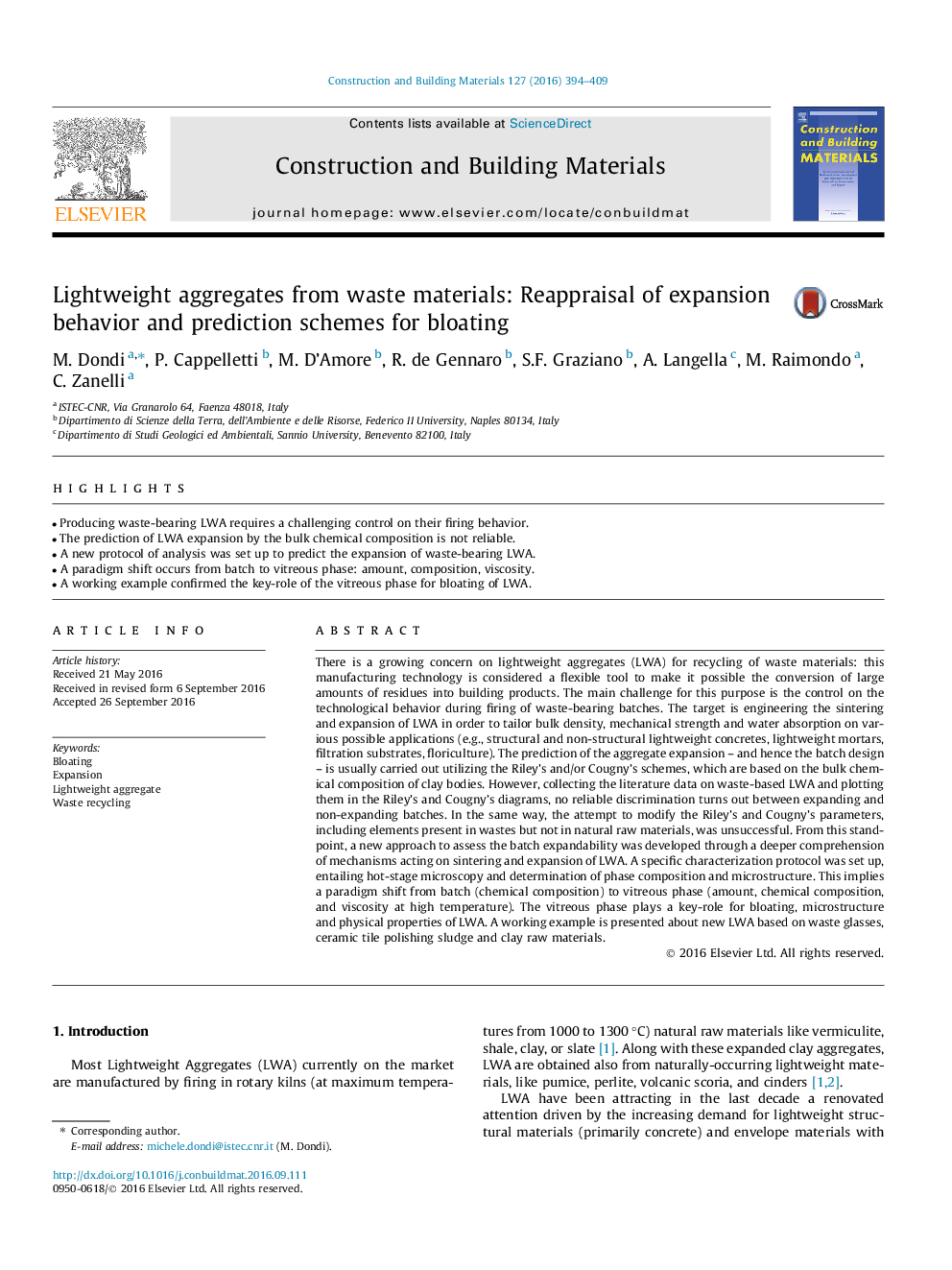| Article ID | Journal | Published Year | Pages | File Type |
|---|---|---|---|---|
| 4913952 | Construction and Building Materials | 2016 | 16 Pages |
Abstract
There is a growing concern on lightweight aggregates (LWA) for recycling of waste materials: this manufacturing technology is considered a flexible tool to make it possible the conversion of large amounts of residues into building products. The main challenge for this purpose is the control on the technological behavior during firing of waste-bearing batches. The target is engineering the sintering and expansion of LWA in order to tailor bulk density, mechanical strength and water absorption on various possible applications (e.g., structural and non-structural lightweight concretes, lightweight mortars, filtration substrates, floriculture). The prediction of the aggregate expansion - and hence the batch design - is usually carried out utilizing the Riley's and/or Cougny's schemes, which are based on the bulk chemical composition of clay bodies. However, collecting the literature data on waste-based LWA and plotting them in the Riley's and Cougny's diagrams, no reliable discrimination turns out between expanding and non-expanding batches. In the same way, the attempt to modify the Riley's and Cougny's parameters, including elements present in wastes but not in natural raw materials, was unsuccessful. From this standpoint, a new approach to assess the batch expandability was developed through a deeper comprehension of mechanisms acting on sintering and expansion of LWA. A specific characterization protocol was set up, entailing hot-stage microscopy and determination of phase composition and microstructure. This implies a paradigm shift from batch (chemical composition) to vitreous phase (amount, chemical composition, and viscosity at high temperature). The vitreous phase plays a key-role for bloating, microstructure and physical properties of LWA. A working example is presented about new LWA based on waste glasses, ceramic tile polishing sludge and clay raw materials.
Related Topics
Physical Sciences and Engineering
Engineering
Civil and Structural Engineering
Authors
M. Dondi, P. Cappelletti, M. D'Amore, R. de Gennaro, S.F. Graziano, A. Langella, M. Raimondo, C. Zanelli,
